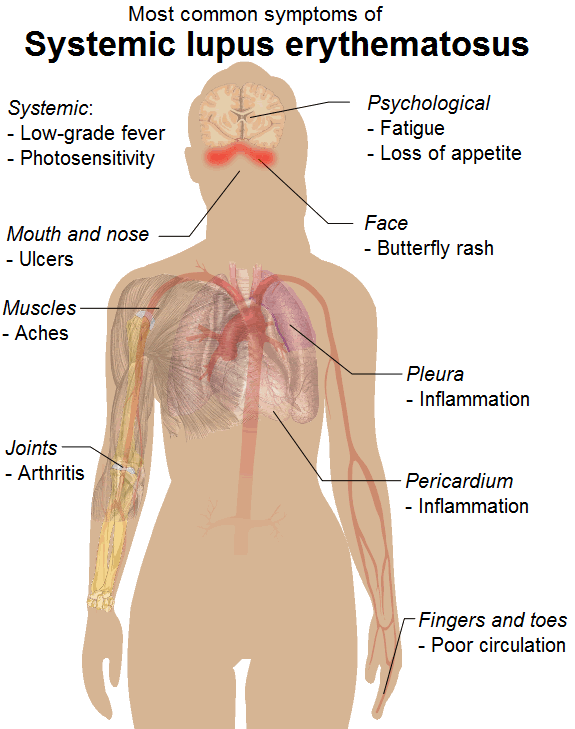





Systematic Lupus can affect any part of the
body, and it its the most "popular" type of lupus
effecting up to 70% of sufferers. The effects
here are extremely similar to drug induced
lupus, however SLE often targets:
since it immatates the symptoms of other
illnesses, therefore can be hard to initally
diagnose.
One of the most known symptoms of SLE is the
lupus butterfly rash. This is a rash around the
nose and the two cheeks, forming a butterfly
shape.
body, and it its the most "popular" type of lupus
effecting up to 70% of sufferers. The effects
here are extremely similar to drug induced
lupus, however SLE often targets:
- Heart
- Joints
- Skin
- Lungs
- Blood Vessels
- Livers
- Kidneys
since it immatates the symptoms of other
illnesses, therefore can be hard to initally
diagnose.
One of the most known symptoms of SLE is the
lupus butterfly rash. This is a rash around the
nose and the two cheeks, forming a butterfly
shape.
Systematic Lupus
welcome to:
| Lupus Awareness UCL |

Treatment for SLE can fall into 4 groups.
Aspirin - The first type of treatment is aspirin however in some patients this causes stomache
pains through ulcers. There are many types of aspirin and finding the right type can be a trial
and error process for patients.
Anti-malarials - the reason why pills that help malaria help ease lupus is currently unknown,
however there are many side effects, including vision impairment, as well as making the skin
turn yellow due to liver damage that these pills may cause.
Steriods - steriods have drastically improved lupus treatment, through easing pain, and
lessening rashes, and the founder(s) was even given a Nobel prize, however steriods also have
side effects, such as increase appetite and due to this weight gain. Other side effects may
include sleep disturbance, mood-swings as well as depression.
Immunosupression - this treatment involves stopping the body from physically creating
anti-bodies to stop the antibodies from attacking the body's cells. However by doing this
surpress blood forming cells in the marrow, therefore this can be very dangerous for the
bones.
Aspirin - The first type of treatment is aspirin however in some patients this causes stomache
pains through ulcers. There are many types of aspirin and finding the right type can be a trial
and error process for patients.
Anti-malarials - the reason why pills that help malaria help ease lupus is currently unknown,
however there are many side effects, including vision impairment, as well as making the skin
turn yellow due to liver damage that these pills may cause.
Steriods - steriods have drastically improved lupus treatment, through easing pain, and
lessening rashes, and the founder(s) was even given a Nobel prize, however steriods also have
side effects, such as increase appetite and due to this weight gain. Other side effects may
include sleep disturbance, mood-swings as well as depression.
Immunosupression - this treatment involves stopping the body from physically creating
anti-bodies to stop the antibodies from attacking the body's cells. However by doing this
surpress blood forming cells in the marrow, therefore this can be very dangerous for the
bones.


